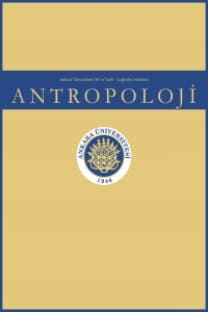Fotoantropometri Yönteminin Adli Yüz Karşılaştırmalarında Kullanımı
Yüz analizi, kimliklendirme çalışmaları açısından büyük önem taşımaktadır. Adli yüz incelemelerinde kullanılan temel yöntemlerden birisi antropometrik inceleme yöntemidir. Antropometrik metotla gerçekleştirilen yüz karşılaştırma işlemi, yüz üzerinde alınan belirli referans noktaları arasındaki metrik ölçümlere dayanmaktadır. Bu işlemlerin fotoğraftan fotoğrafa gerçekleştirilmesi durumuna da fotoantropometri denmektedir. Bu çalışmanın amacı fotoantropometri yönteminin adli yüz karşılaştırmalarında kullanımının güvenilirliğini değerlendirmektir. Kişilerin duruşu ve kameraya olan mesafesi, kameranın açısı, kameranın çözünürlüğü, sıkıştırma algoritması gibi faktörlerin fotoantropometri yöntemine etki ettiği bilinmektedir. Çalışmada literatürde fotoantropometri ile ilgili yapılmış araştırmalar derlenmiş ve yöntemin avantajları ve dezavantajları ortaya konulmuştur
The Use of Photoanthropometry Method in Forensic Facial Comparison
Facial analysis has capital importance of identification studies. One of the most essential methods in forensic facial analyse is anthropometrical examinations. Facial comparisons done with anthropometrical examination method depends on metrical measurements between certain landmarks on the face. In the case of doing all this process from photo to photo is called as photoanthropometry The aim of this study is to determine the reliability of the anthropometrical method in forensic facial comparisons. It is known that the factors like position and the distance of the individual from the camera, the angle and the resolution of the camera, the compression algorithm effects the efficiency of photoanthropometrical examination. In this study the researches about photoanthropomety are reviewed and the advantages and the disadvantages of the method is presented
Keywords:
Photoanthropometry, Facial Comparison, Anthropometry, Image Comparison ,
___
- Akın, G. (2001), Antropometri ve Ergonomi, Ankara: İknasa Ofset Matbaacılık.
- Ballytyne, J. W. (1984), “The Teralogical Records of Chaldea”, Teratologica, 1, 127.
- Bulut, Ö. (2008), “Görüntü İncelemeleri Giriş”, Ses Görüntü Data İncelemeleri, L. Bayram, (Ed.), Ankara: Adalet Yayınevi.
- Burton, A. M., Bruce, V. & Dench, N. (1993), “What’s the Difference Between Men and Women: Evidence From Facial Measurement”, Perception, 22 (2), 153
- Catterick, T. (1992), “Facial Measurements as an Aid to Recognition”, Forensic Science International, 56, 23-27.
- Davis, J. P., Valentine T., & Wilkinson C. (2012), “Facial Image Comparison”, Cranofacial Identification, C. Wilkinson & C. Rynn (Eds.), Cambridge Uni- versity Press, 136-153.
- Evans, R. (2014), “Forensic Facial Comparison: Issues and Misconceptions”, Ad- vances in Forensic Human Identification, X. Mallett, T. Blythe & R. Berry (Eds.), 2nd Press, CRC Press, 213-234.
- Farkas, L. G. (1987), “The Proportion Index”, Anthropometric Facial Proportions in Medicine, L. G. Farkas & I. R. Munro (Eds.), Springfield: Charles C Thomas.
- FISWG (2012), Guidelines for Facial Comparison Methods, https://www.fiswg.org/doc/pdf/ FISWG_GuidelinesforFacialComparisonMethods_v1.0_2012_02_02.pdf, Eri- şim Tarihi: 07.12.2013.
- Günay, I. (2010), Kimlik Tayininde Röntgen ve Fotoğraf Çakıştırma Metodu Üzeri- ne Bir Deneme, Ankara Üniversitesi Sos. Bil. Ens. Doktora Tezi.
- Güngörmüş, S. (2008), İnsan Yüzü ve Fotoğraflardan Alınan Antropometrik Ölçü- lerle Kimlik Tespiti ve Cinsiyet Tayini, Ankara Üniversitesi Sos. Bil. Ens. Yük- sek Lisans Tezi.
- Hajnis, K. (1986), “Categories in Classical Anthropometric Proportion Systems”, Anthropometric Facial Proportions in Medicine, L. G. Farkas & I. Munro (Eds), Springfield: Charles C. Thomas.
- Halberstein, R. A. (2001), “The Application of Anthropometric Indices in Forensic Photography: Three Case Studies”, Journal of Forensic Science, 46, 1438- 1441.
- Hrdlička, A. (1939), Practical Anthopometry, Philadelphia: Wilstar Institute of Ana- tomy and Biology.
- İşcan, M. Y. (1993), “Introduction of Techniques for Photographic Comparison: Potential and Problems”, Forensic Analysis of the Skull, M. Y. İşcan & R. P. Helmer (Eds.), Wiley-Liss, 57-70.
- Kleinberg, K. F. (2008), Facial Anthropometry as an Evidential Tool in Forensic Image Comparison, Phd Thesis, University of Glasgow.
- Mardia, K. V., Coombs, A., Kirkbride, J., Linney, A. & Bowie, J. L. (1996), “On Statistical Problems with Face Identification from Photographs”, Journal of Applied Statistics, 23(6), 655-675.
- Moreton, R. & Morley, J. (2011), “Investigation into the use of Photoanthropometry in Facial Image Comparison”, Forensic Science International, 212, 231
- Neave, R. A. H. (1998), “Age Changes in the Face in Adulthood”, Craniofacial Identification in Forensic Medicine. Sdney: Arnold Publications.
- Porter, G., & Doran, G. (2000), “An Anatomical and Photographic Technique for Forensic Facial Identification”, Forensic Science International, 114, 97-105.
- Stavrianos, C., Papadopoulos C., Pantelidou, O., Emmanouil, J., Petalotis N. & Tatsis, D. (2012), “The Use of Photoanthropometry in Facial Mapping”, Re- search Journal of Medical Sciences, 6 (4): 166-169.
- Şahiner, Y. (2007), Erkek ve Bayanlarda Kafatası Kemiğinden Geometrik Morfo- metri Enstitüsü Yüksek Lisans Tezi.
- Taister, M. A., Holliday S. D. & Bormann, H. I. M. (2000), “Comments on Facial Aging in Law Enforcement Investigation”, Forensic Science Communicati- ons, 2, 2.
- Tunalı, İ. (2001), Adli Tıp, Ankara: Seçkin Yayıncılık.
- Ulajaszek, S. J. (1994), Anthropology: The Individual and the Population, Cambrid- ge University Press.
- Yaşlı, H. & Bulut, Ö. (2008), “Morfolojik ve Antropometrik Yöntemlerin Yüz Kar- şılaştırma İşlemlerinde Uygulanması”, Adli Bilimler Dergisi, 7(2): 7-16.
- ISSN: 0378-2891
- Yayın Aralığı: Yılda 2 Sayı
- Başlangıç: 1963
- Yayıncı: Ankara Üniversitesi Basımevi
Sayıdaki Diğer Makaleler
Sınır-ötesi Evlilikler ve Sınır Çokkarılılığı: "İthal Kumalar"
Prof. Dr. Ayhan Ersoy'un Özgeçmişi ve Çalışmaları
Diş Çürüğü ve Tarihteki Öyküsü
Fotoantropometri Yönteminin Adli Yüz Karşılaştırmalarında Kullanımı
"Irk" Kavramının Tarihsel Gelişimi ve Adli Antropolojide Kullanımı
Batman Ezidîlerinin Defin Pratikleri Üzerine Etnografik Değerlendirmeler
Dara (Mardin) Geç Roma Dönemi İskelet Toplumu Dişlerinde Bir Odontometrik Analiz
Türkiye Miyosen Dönem Fosil Gergedangilleri
"Irk" Kavramının Tarihsel Gelişimi ve Adli Antropolojide Kullanımı
